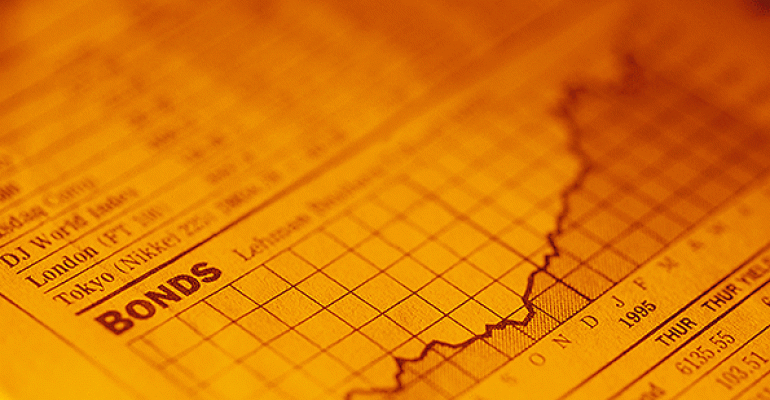By Brian Chappatta
(Bloomberg) --A buildup in risk across the globe is getting too big for U.S. bond investors to ignore.
After staking their biggest bet ever against the $14 trillion Treasuries market at the start of 2017, hedge funds and other large speculators have had a rapid change of heart. Their net-long position in 10-year Treasury futures is now the most since December 2007, reaching 240,010 contracts as of May 16, U.S. Commodity Futures Trading Commission data released Friday show.

To Wall Street strategists, the reversal signals a lasting shift toward bonds becoming back in favor. Benchmark 10-year yields tumbled the most in two months last week, turning into a haven from drama around Donald Trump’s presidency and signaling doubts that fiscal stimulus will come anytime soon. On top of that, the Federal Reserve appears intent on raising interest rates at a time when inflation isn’t at their goal and economic data miss expectations.
When it comes to long futures positions, “the biggest takeaway I have is it confirms the idea that we’ve probably seen the peak of 10-year yields already in 2017,” said Ian Lyngen, head of U.S. rates strategy at BMO Capital Markets. “There’s a lot of economic and geopolitical headwinds, the core inflation story is starting to become more prevalent, and the Fed will most likely walk into the June meeting and follow through with a hike.”
Bond traders have seen this story play out time and time again: something pops up that quashes calls for higher interest rates and optimism surrounding the U.S. economy. Goldman Sachs Group Inc. strategists lowered their year-end forecast for 10-year U.S. yields last week, to 2.75 percent from 3 percent, citing weakening inflation and escalating political risks.
The Fed’s preferred measure of inflation fell in March to 1.8 percent, from 2.1 percent a month earlier. In further evidence of declining price growth, the core consumer price index has dropped for three straight months to below the central bank’s 2 percent target. Market-based gauges of inflation expectations are near the lowest since November.

Accelerating inflation was a key component of the favored trades after Trump’s election win, with investors betting that his administration’s fiscal stimulus plans would jumpstart the economy. However, a series of damaging revelations this month may divert attention from those initiatives.

Fed policy makers, meanwhile, have said they haven’t baked fiscal spending into their outlook and appear ready to raise interest rates in June for the third time in six months. The market is mostly on board, pricing in about a 75 percent chance of a hike, based on the current effective fed funds rate and the forward overnight index swap rate.
“If investors believe that a delay in the delivery of fiscal stimulus will damage aggregate demand and slow growth, while the Fed continues to tighten, we could see a significant impact on rates,” Citigroup Inc. strategists led by Mark Schofield wrote Monday in a report. With the backdrop of waning inflation, “this could mean a significant flattening of yield curves.”
The spread between two-year and 10-year Treasury yields last week narrowed to as little as 94 basis points, the least since October. That signals longer-dated debt is outperforming.
Speculators remain net short other parts of the Treasury curve, including five-year note futures, which are among the most sensitive to the Fed’s rate-hike outlook. They’re also paring back on long bond contracts, after amassing their most bullish position since September.
For Lyngen at BMO, the bets on the 10-year futures contract is what’s worth watching, since it’s the quickest way for investors both in the U.S. and across the world to take a stand on the path of the Treasury market.
The positioning “is quite some turn around and captures the market’s mood shift,” Kit Juckes, a fixed-income strategist at Societe Generale SA, wrote Monday in a report. “Hope of a significant fiscal boost have melted away and been replaced by fear of both domestic and international turmoil.”
To contact the reporter on this story: Brian Chappatta in New York at [email protected] To contact the editors responsible for this story: Jeremy Herron at [email protected] Dave Liedtka, Eric J. Weiner





